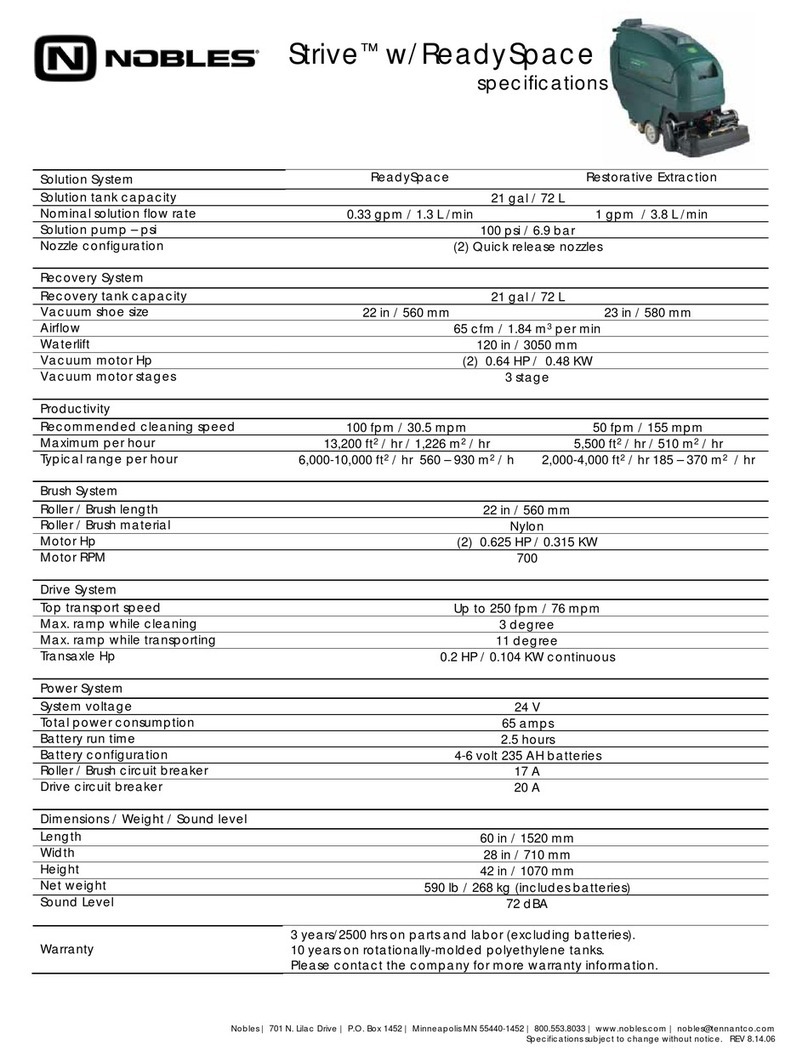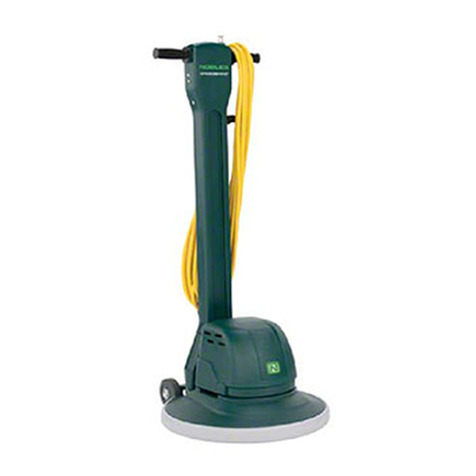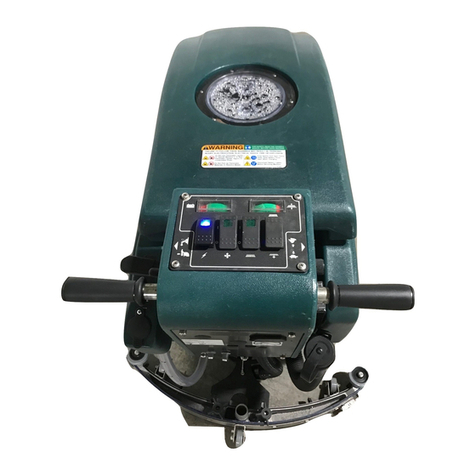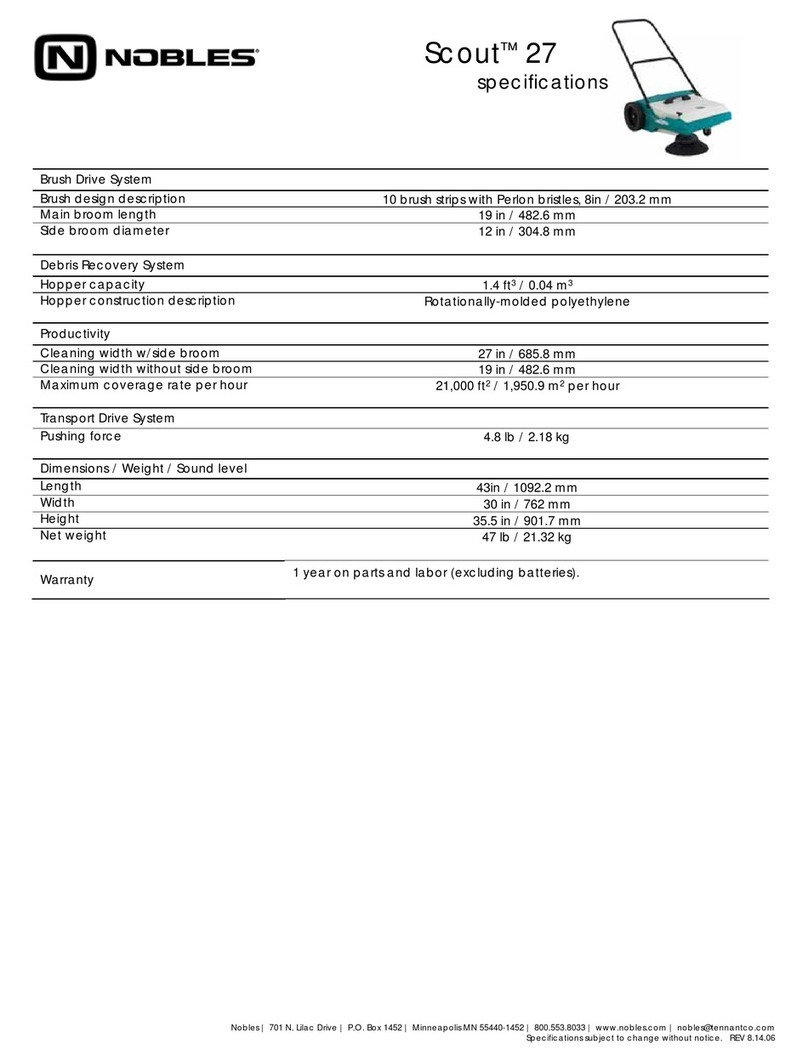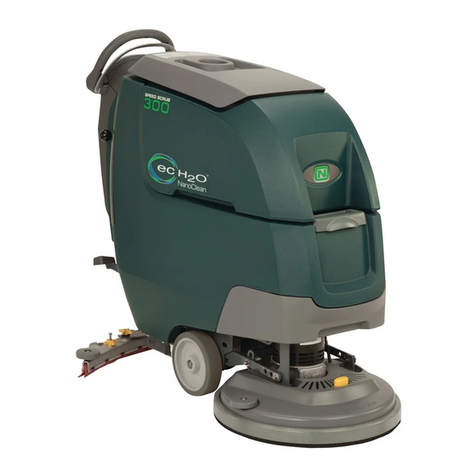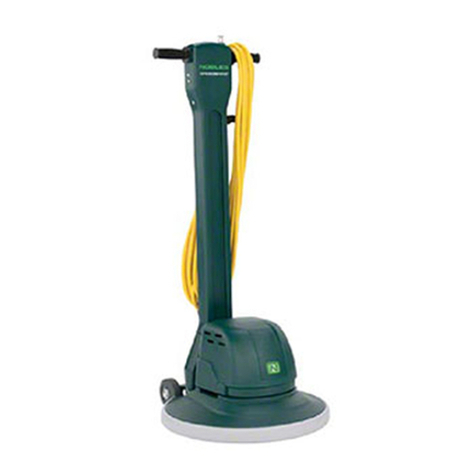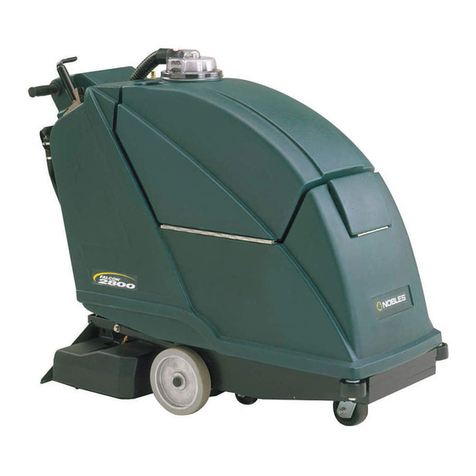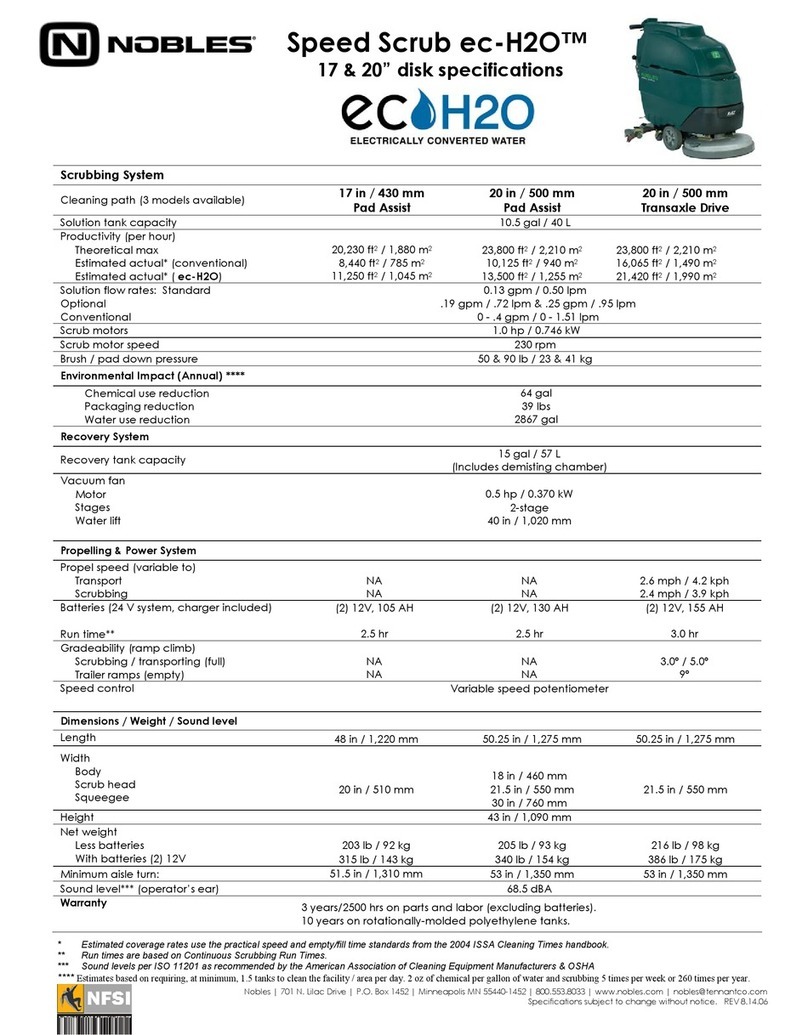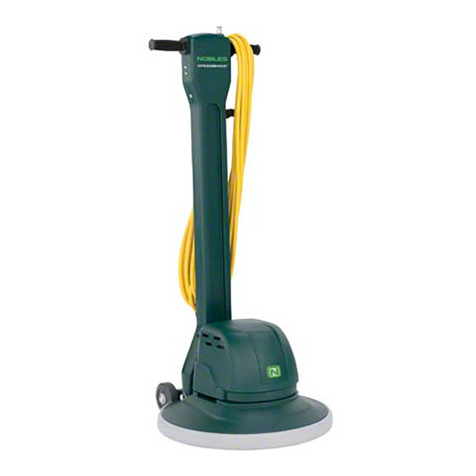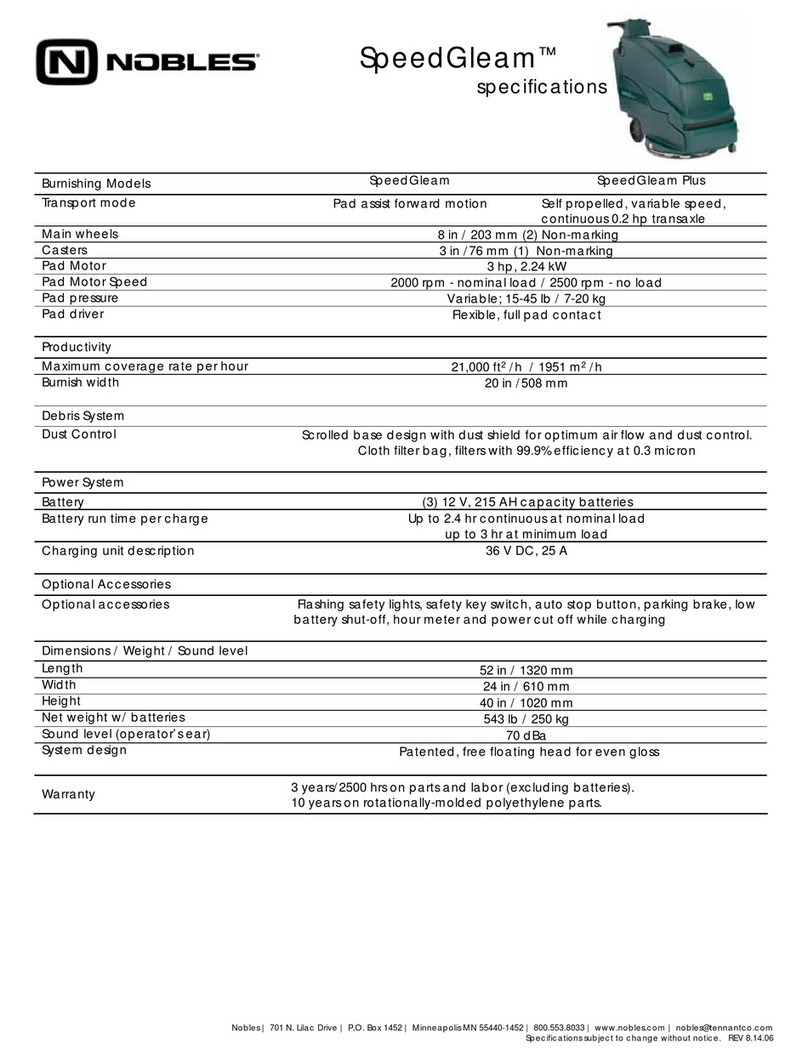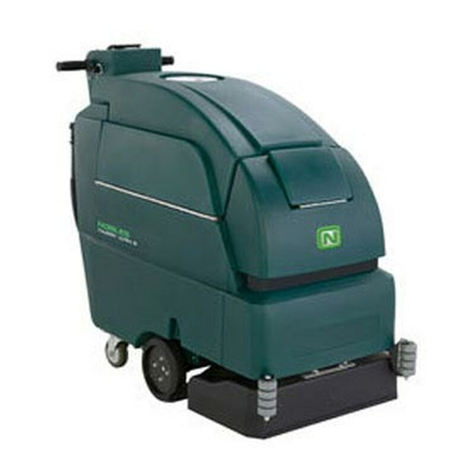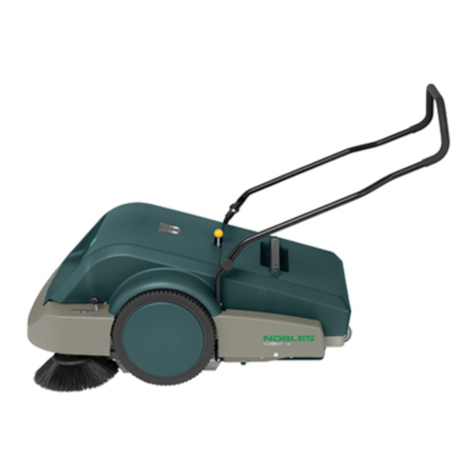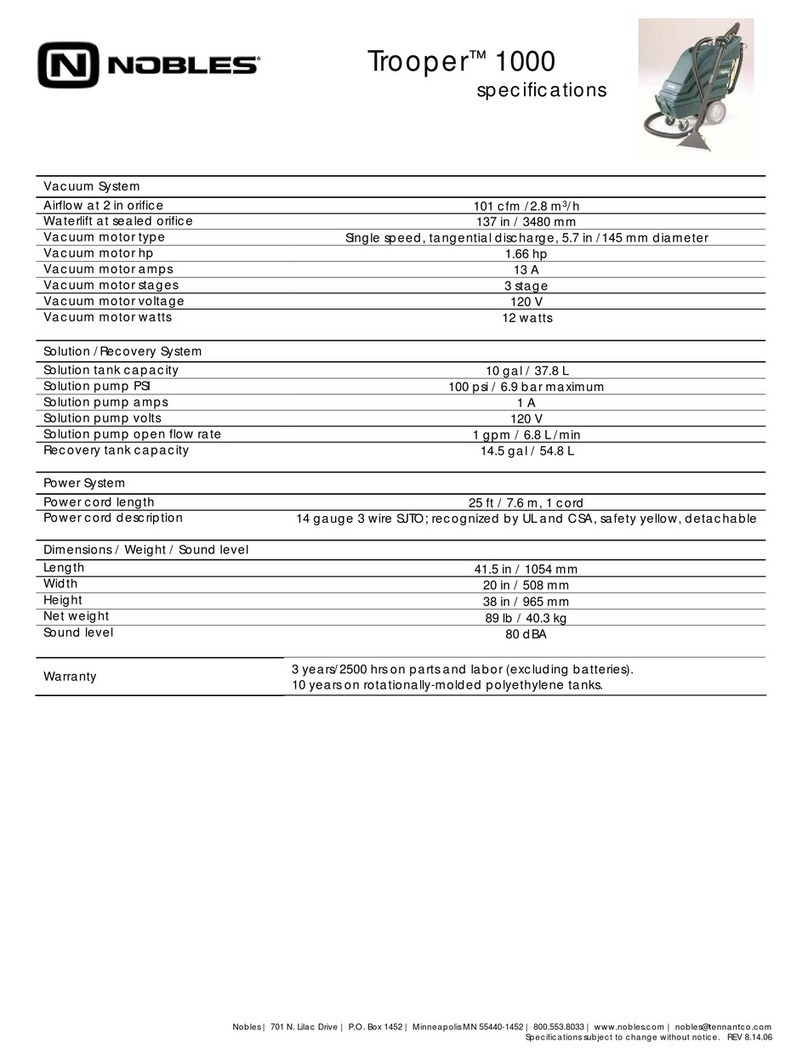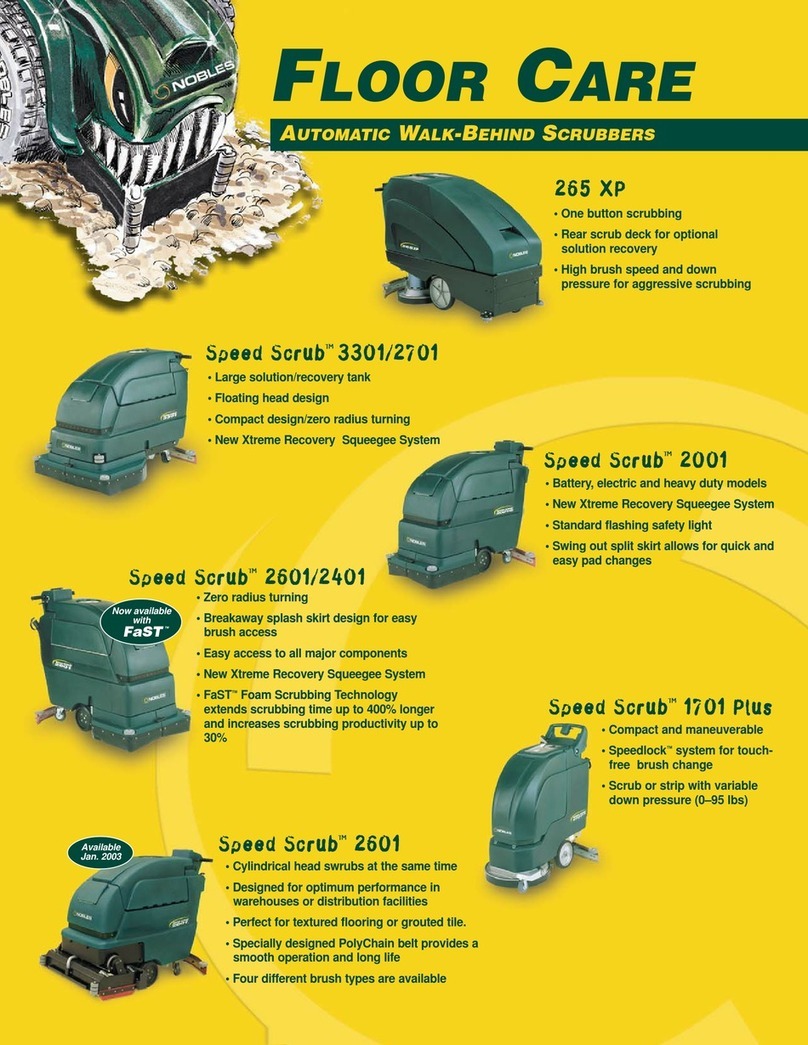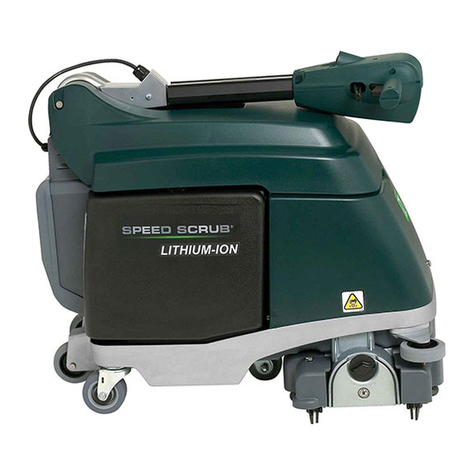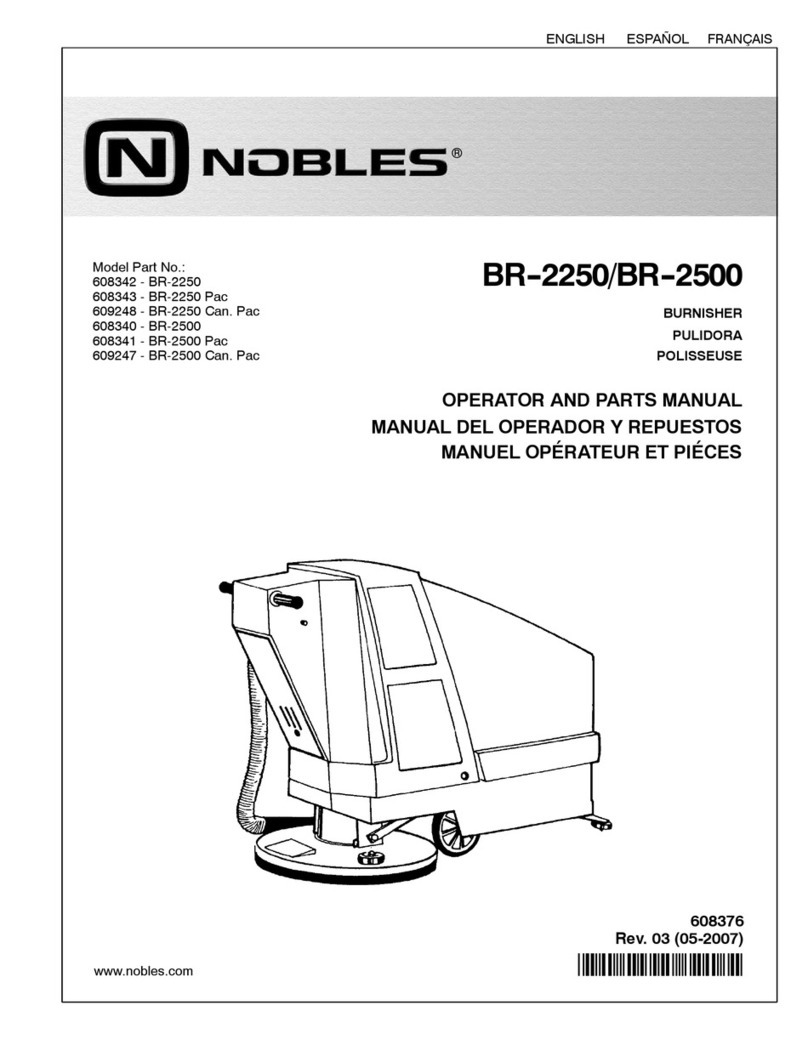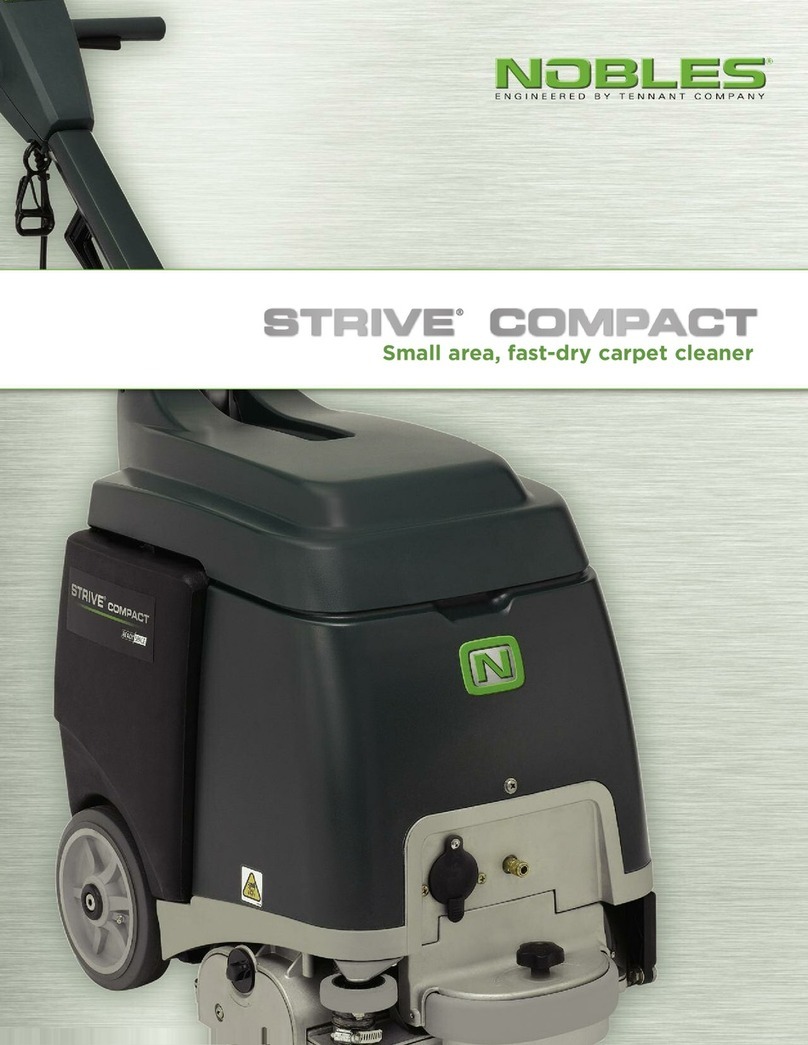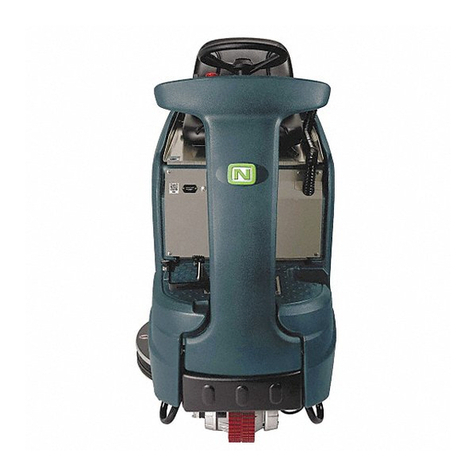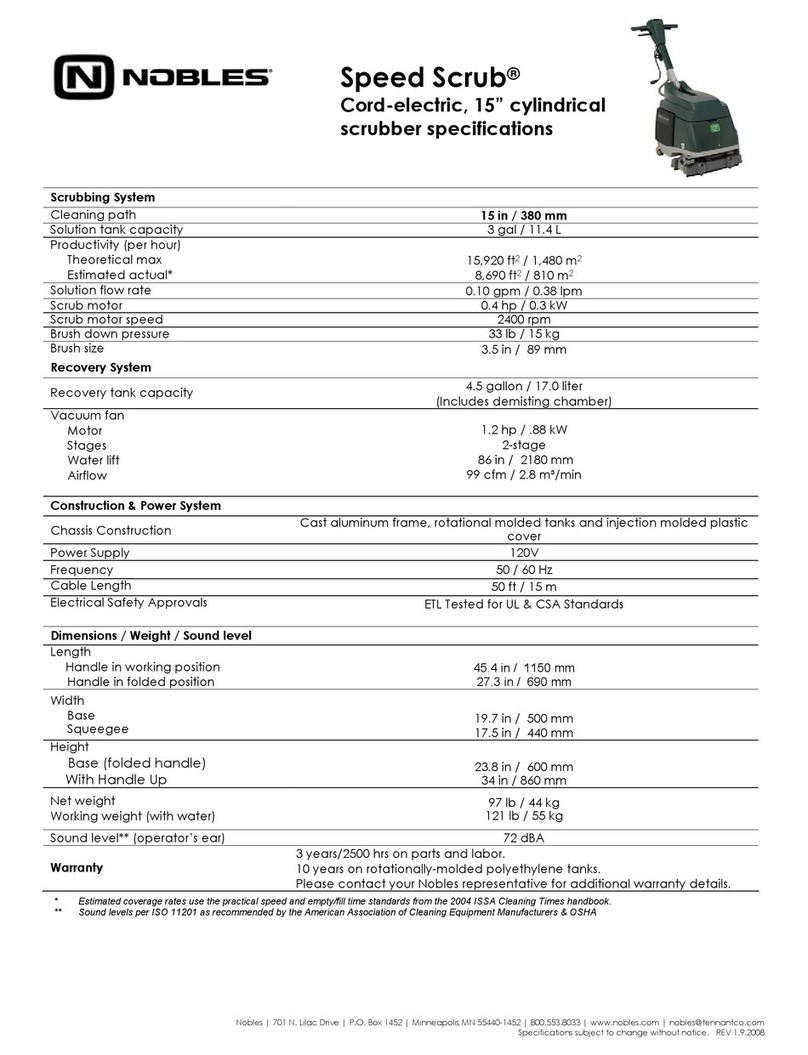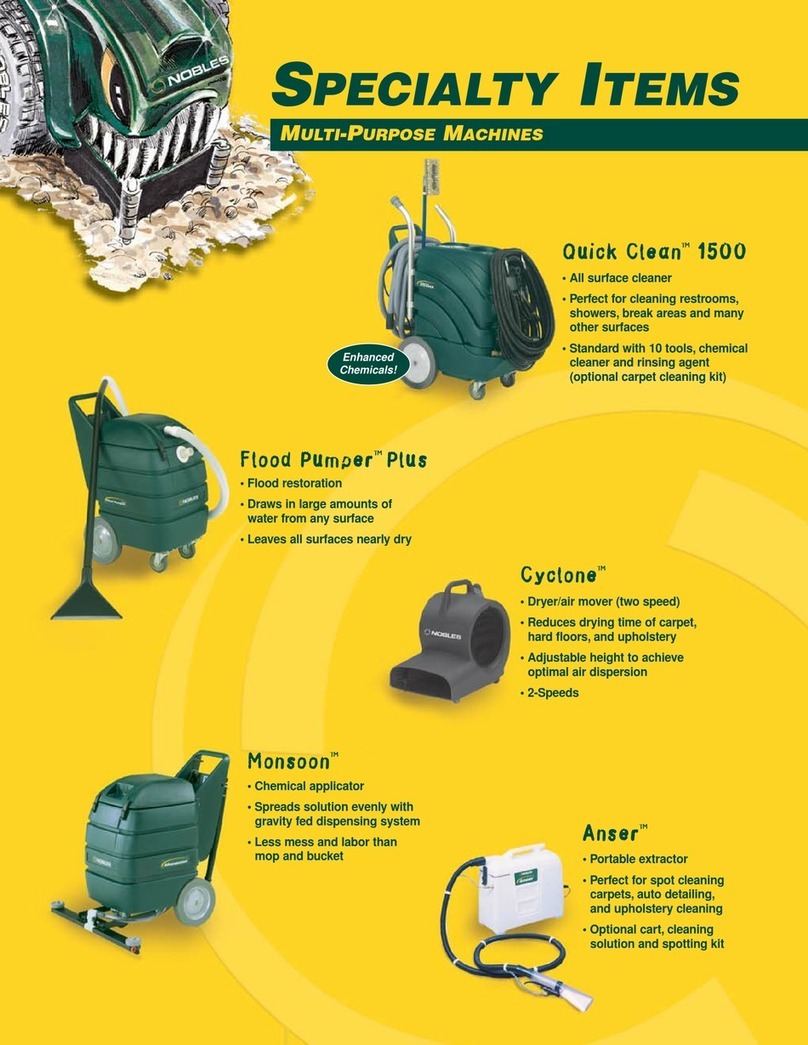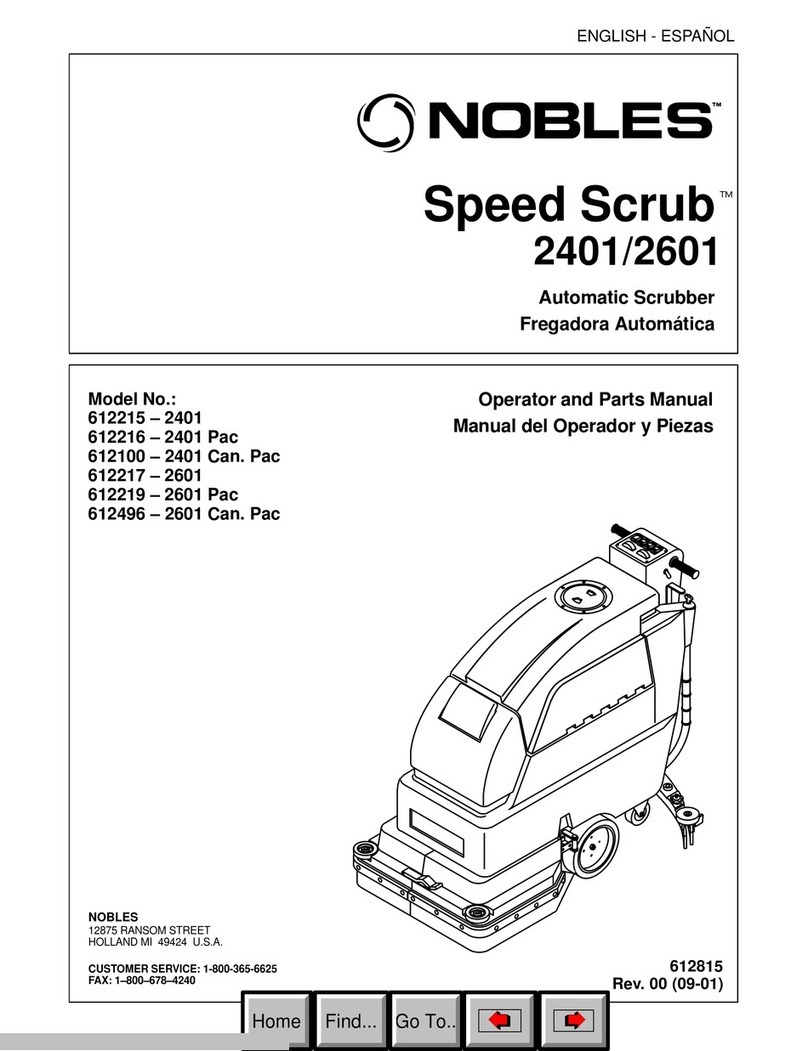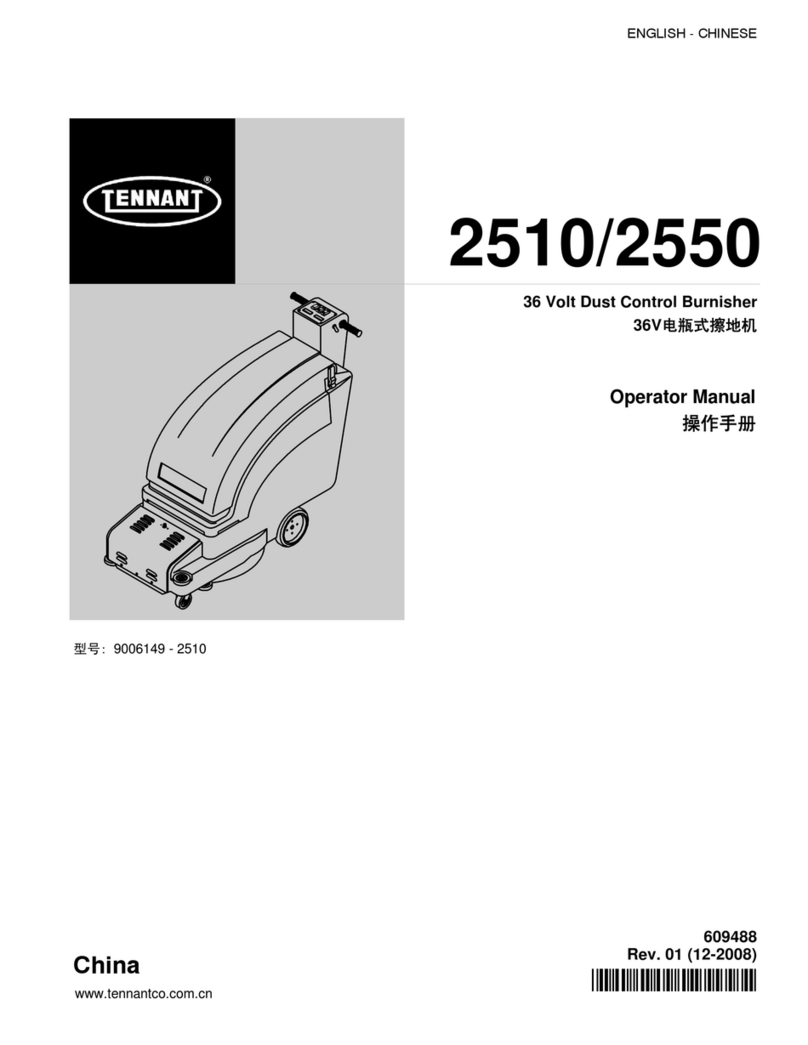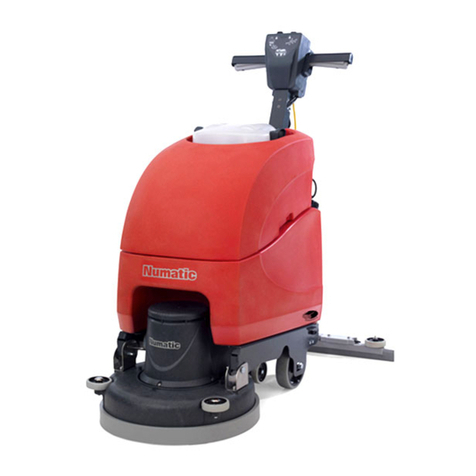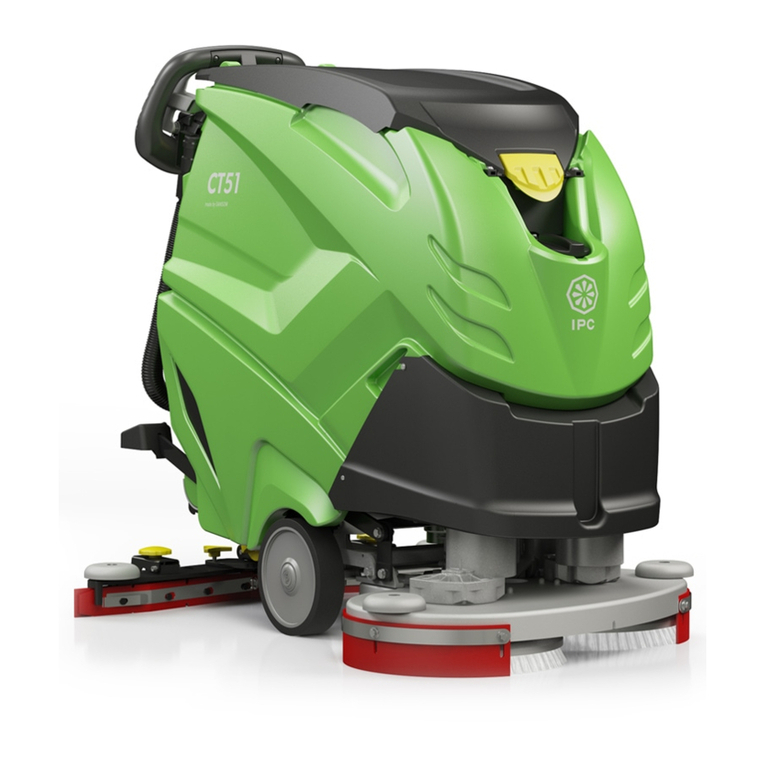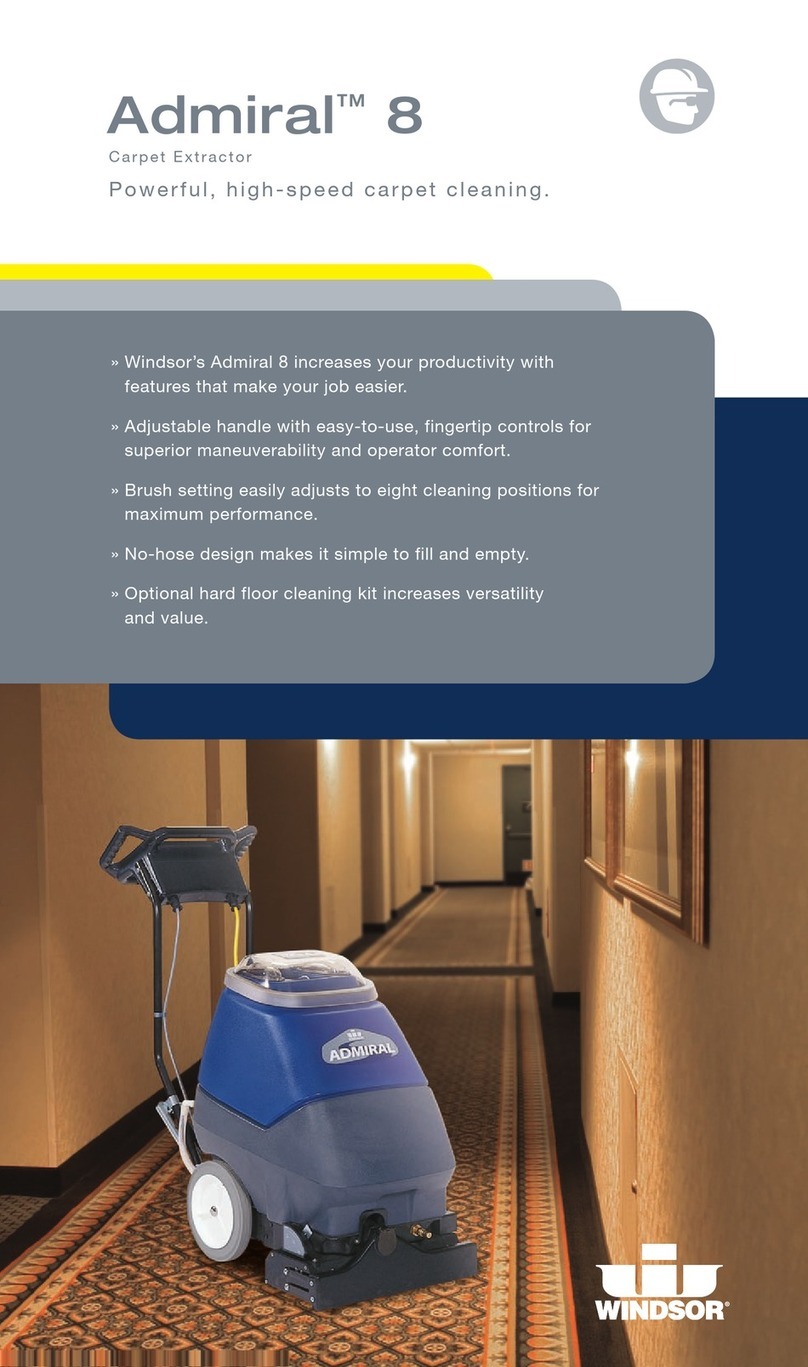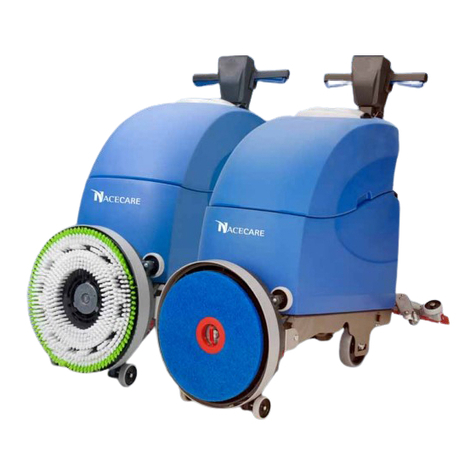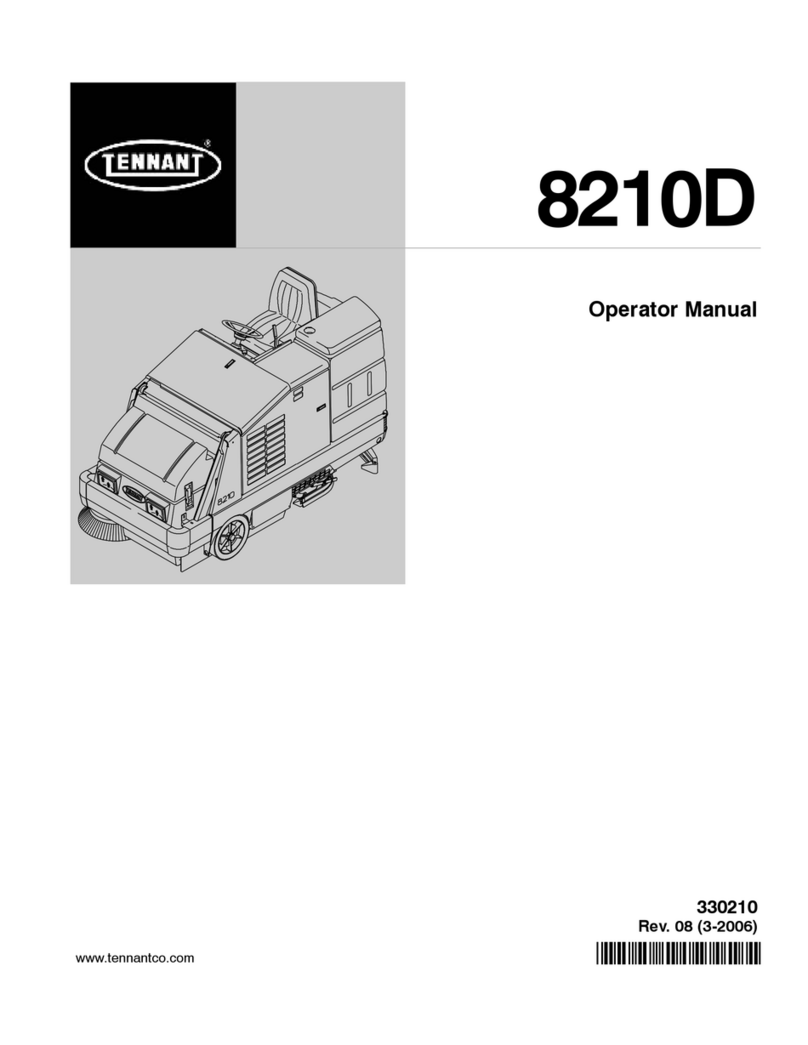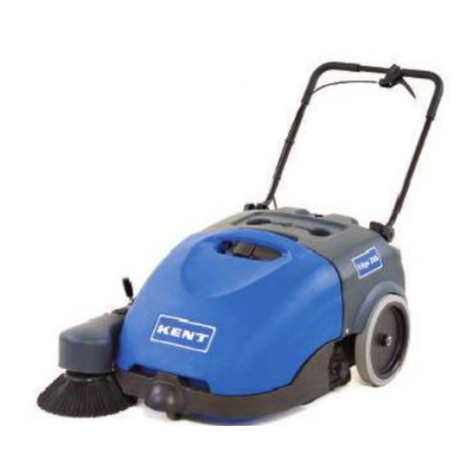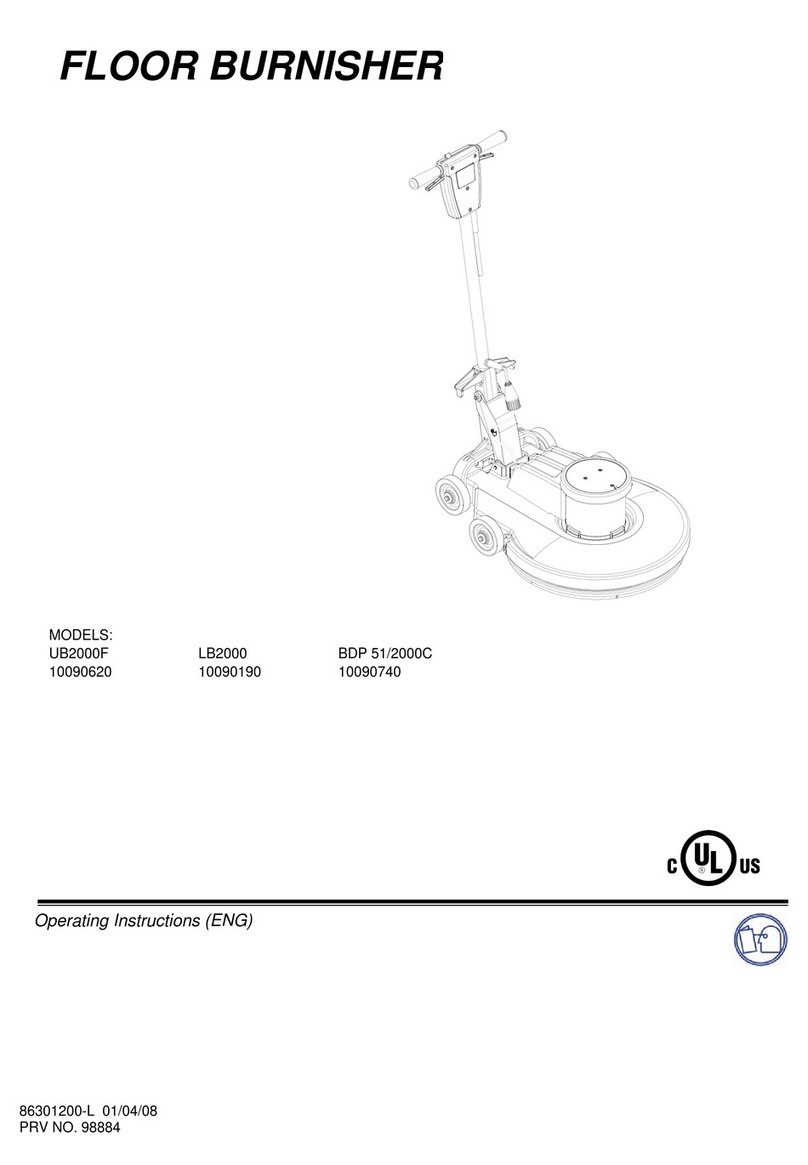
PLDC04364
REVISION 00
December 16, 2020
TECHNICAL OFFICE
December 17, 2020 7of 61
10RYHWKHPDFKLQHWRÀDWGU\ÀRRULQJ
20DNHVXUHWKDWWKHUHLVHQRXJKURRPDURXQGWKHPDFKLQHWRSHUIRUPWKHFKHFNVVDIHO\
3Turn the front cowling and, after undoing the screws, remove the top cowling to access the battery compartment.
40DNHVXUHWKDWWKHEDWWHULHVRQWKHPDFKLQHDUHFKDUJHG99
58VHDFODPSRQDPPHWHUZLWKDIXOOVFDOHUHDGLQJRIDWOHDVW$DPSHUHV
60RYHWKHPDFKLQHRQWRDÀDWDQGVPRRWKÀRRUWRHQVXUHDFRUUHFWFXUUHQWUHDGLQJ
7Remove the left side guard and locate the brush motor.
8Pick out the Red wire of the centre brush motor and apply the clamp-on ammeter to it.
9Operate the main brush motor from the control panel by turning the key switch to the “I” position
10 Read the value on the clamp-on ammeter display and compare it against the values shown in the table.
11 If the value falls within the range indicated in the table, disconnect the instrument and reinstate the side guard
and top cover of the machine.
12 Conversely, if the value is at variance with those indicated in the table, proceed to make the following checks.
13 Lift the side brush and check that the current draw under no-load conditions is within the values in the table.
13a ,IWKHUHDGLQJLVGLႇHUHQWXVXDOO\KLJKHUIURPWKRVHLQWKHWDEOHFKHFNWKHEHDULQJVPRXQWHGRQWKHEUXVKVKDIW
the motor and gear reducer for noise and/or the motor carbon brushes for wear.
13b Replace the brush motor with a new one.
Carry out the test with the side brush disengaged (the control lever on the control panel must
UHPDLQLQWKH³´SRVLWLRQZLWKRXWDFWLYDWLQJWKHIDQQRUWKH¿OWHUVKDNHUYLDWKHVZLWFKSURYLGHG
*
Current draw A (amperes) Min Max
1RORDGEUXVKUDLVHG 2.6 A 3.2 A
/RDGDSSOLHGEUXVKRSHUDWLQJ 7.8 A 9.5 A
Carry out the test with the machine at standstill: as the brush rotates in the direction opposite
to the direction of travel, this could lead to an increase in the current draw value.
*
89
$&KHFNLQJPDLQEUXVKPRWRUFXUUHQWGUDZ
